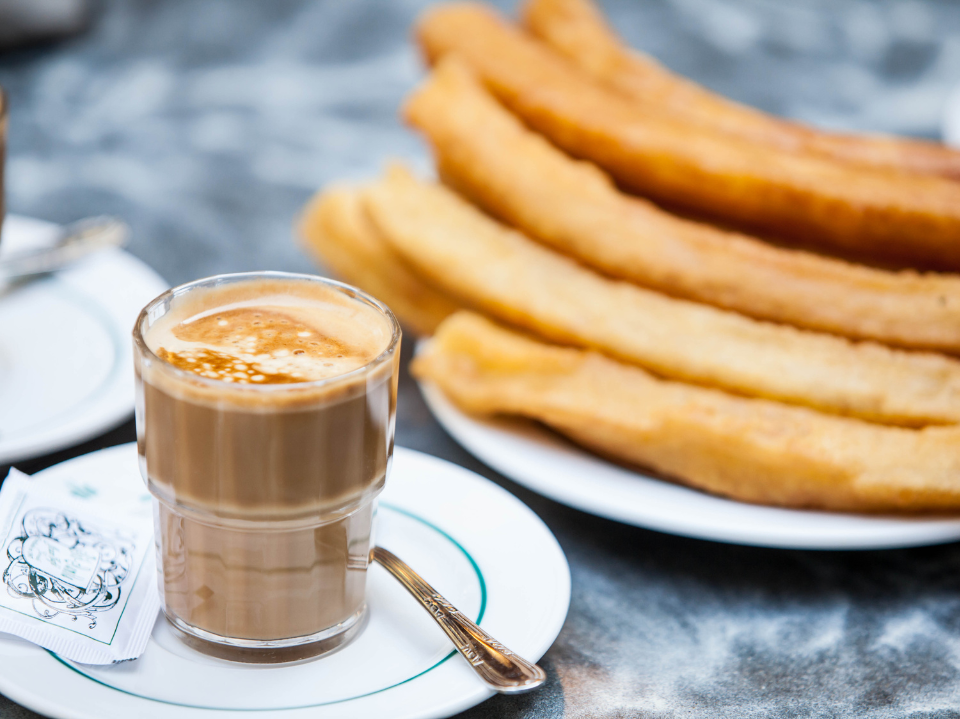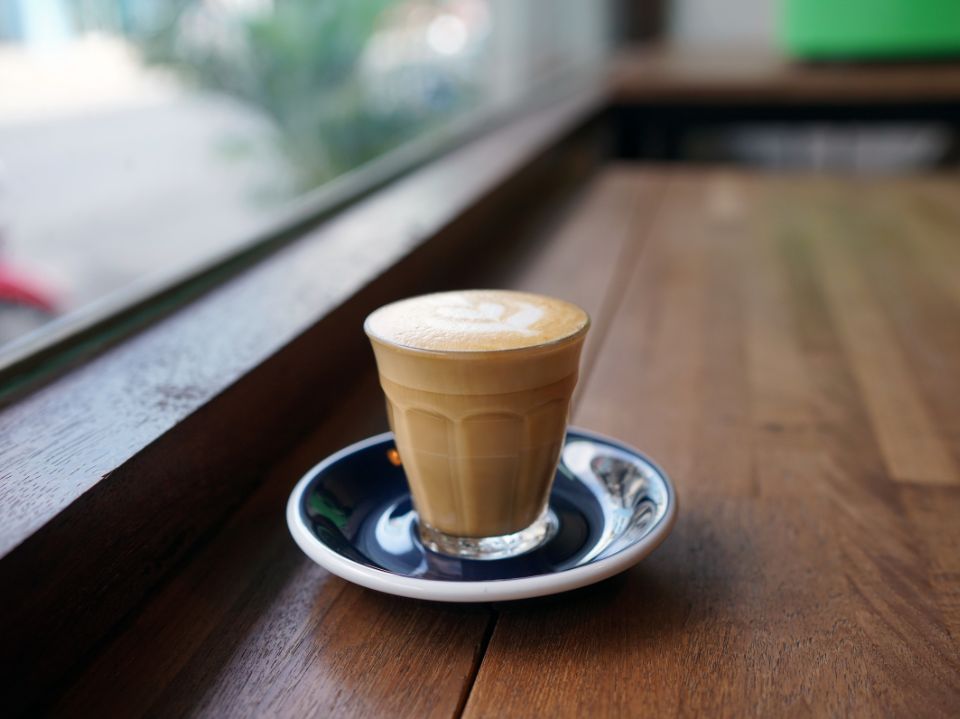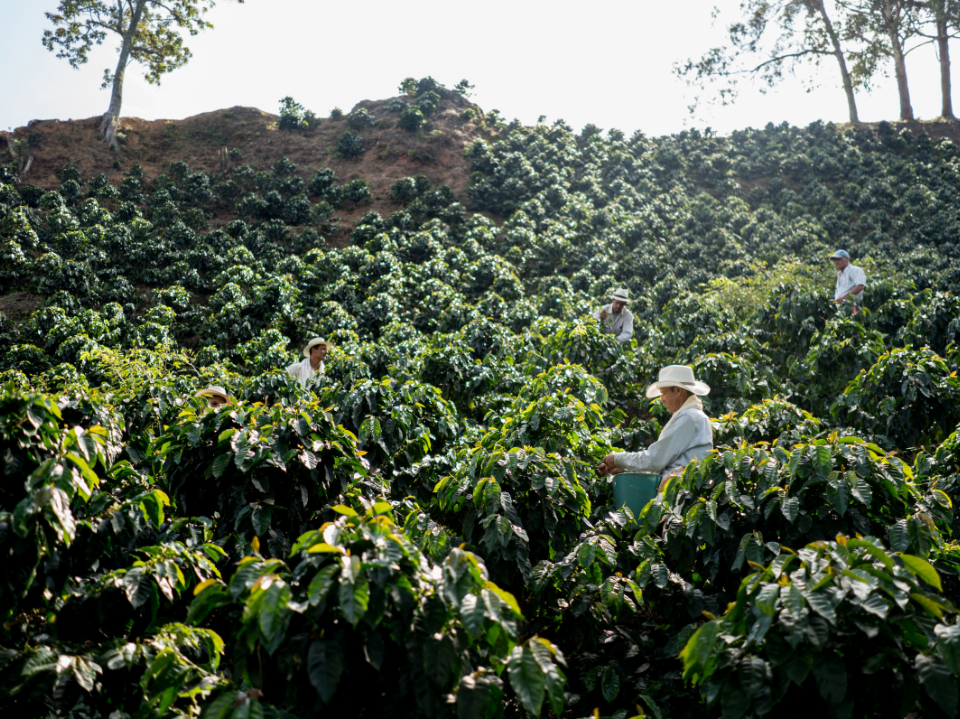Whether you're meandering through the cobblestone streets of Barcelona or soaking up the sunshine in Seville, knowing how to order a coffee is key to experiencing the local way of life. That’s why we’ve put together this essential guide to walk you through the flavours, customs, and nuances of Spanish coffee culture, from how to say ‘coffee’ in Spanish to what to pair with a Café con Leche. By the end, you’ll be equipped with all the knowledge you need to order with confidence and enjoy your cup like a true Spaniard.
Types of Coffee in Spain
Spain's coffee culture is as rich as its history and as varied as its regions, with each type of coffee offering a unique taste and experience. Amongst the wide range of different coffee orders available, the most popular Spanish coffee menu items are:
Café Solo
This is the Spanish version of espresso, a strong and bold shot of coffee. It's usually quite small but packs a punch in terms of flavour and caffeine, making it perfect for a quick, invigorating pick-me-up at any time of the day.
Tip: If you prefer a slightly milder taste, ask for a 'Café Solo Largo', which is a bit longer than a regular espresso.
Cortado
Cortado translates to ‘cut’. This term is used to describe an espresso cut with a small amount of warm milk (usually not frothy or textured) to reduce the acidity, offering the perfect balance between the strength of espresso and the creaminess of milk. Cortados are often enjoyed slowly and outdoors during an afternoon break.
Tip: Usually order a Piccolo? Keep in mind that in the comparison between Cortado vs Piccolo, the Cortado has a higher ratio of coffee to milk – so you might want to ask for a little less.
Café con Leche
Similar to a latte, Café con Leche is a blend of equal parts espresso and steamed milk. This drink is creamy and has a milder coffee flavour. It’s a popular choice for breakfast in Spain, often paired with pastries or toast.
Tip: For a classic Spanish breakfast, try a creamy Café con Leche paired with ‘Churros’ or 'Magdalenas', light lemon-flavoured muffins perfect for dunking.
Carajillo
A unique Spanish concoction, a Carajillo is a combination of espresso with a shot of brandy, whisky, or rum (often flamed to enhance the flavour). Typically enjoyed after meals, it’s seen as a digestif and a way to prolong the dining experience.
Café Bombón
A sweet treat, Café Bombón is made with equal parts of espresso and condensed milk, creating a rich, creamy, and sweet coffee. Perfect for those with a sweet tooth, this drink is often enjoyed in the afternoon or after dinner.
Leche Manchada
Literally translating to "stained milk," this is a very light coffee drink, consisting primarily of milk with just a splash of coffee. Leche Manchada is an excellent choice for those who prefer a very mild coffee flavour or for children.
Café con Hielo:
Café con Hielo, meaning coffee with ice, typically refers to a glass of ice served alongside a Café Solo. The ritual of this beverage involves quickly pouring the hot coffee over the ice to chill it instantly. A popular summer beverage, a Café con Hielo is perfect for cooling down while still enjoying the robust flavour of Spanish coffee.
Ordering Etiquette
Understanding the etiquette of ordering coffee in Spain can enhance your café experience. Two of the most common ways to order are:
- “Un café, por favor” (A coffee, please). This is a polite and simple phrase that will be understood everywhere. Depending on your order, you can just replace the term ‘café’ with whichever variation you’d like. For example, “Un cortado, por favor”.
- “Me pones/me das un café, porfa?”. This is more like asking “Could I please get a coffee?” and will make you sound much more natural and help you blend in with the locals.
Even if you order in English, it’s essential to be polite and patient when ordering. Service in Spain may be more leisurely than what you're accustomed to, so build in some time and enjoy the experience.
Customising Your Order
Most cafes in Spain now offer milk alternatives too, so don’t forget to specify if you want your coffee made with something other than regular cow’s milk (leche normal).
Common varieties in Spain are:
- Leche ‘de Avena’ (Oat Milk)
- Leche ‘de Almendras’ (Almond Milk)
- Leche ‘de Soja’ (Soy Milk)
Similarly, you can request common modifications to your drink using the below phrases:
- ‘Con azúcar' (with sugar)
- ‘Sin azúcar' (without sugar)
- ‘Con hielo (with ice)
- ‘Bien caliente’ (piping hot)
- ‘Para llevar’ (to go)
Café Culture in Spain
The café culture in Spain is vibrant and social. Cafeterías are not just places to drink coffee; they are social hubs where people meet, chat, and relax. Take-away coffee culture isn't as prevalent as in other countries, with locals preferring to enjoy their coffee in a relaxed setting as a mid-morning break or after meals. While an increasing number of cafeterías now offer coffee to go, it’s still far more common to see people lingering over their coffee for hours, enjoying the ambiance of the cafeterías terrace.
Note: The word ‘café’ in means ‘coffee’ in Spanish. To describe the establishment that we call a ‘café’ or ‘coffee shop’, the Spaniards use the word ‘cafetería’.
Embracing the Spanish Coffee Experience
In Spain, ordering coffee is an art that reflects the nation's rich heritage. From the robust Café Solo to the sweet Café Bombón, the diversity of options embodies the vibrant Spanish lifestyle. Remember, it's not just about the drink but the experience - the conversations, the leisurely pauses, and the lively atmosphere.
With this guide, you're now ready to navigate the Spanish coffee scene with ease. Each cup offers a glimpse into Spain's cultural tapestry, so embrace this opportunity to connect with the local life. Step into any cafetería, order with confidence, and let the rich flavours of Spanish coffee add to your memorable experiences in this enchanting country. ¡Disfruta de tu café en España! (Enjoy your coffee in Spain!)



